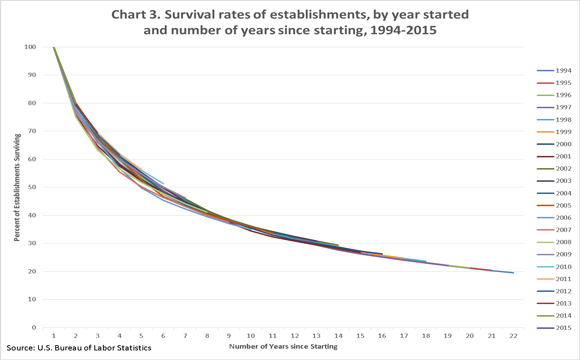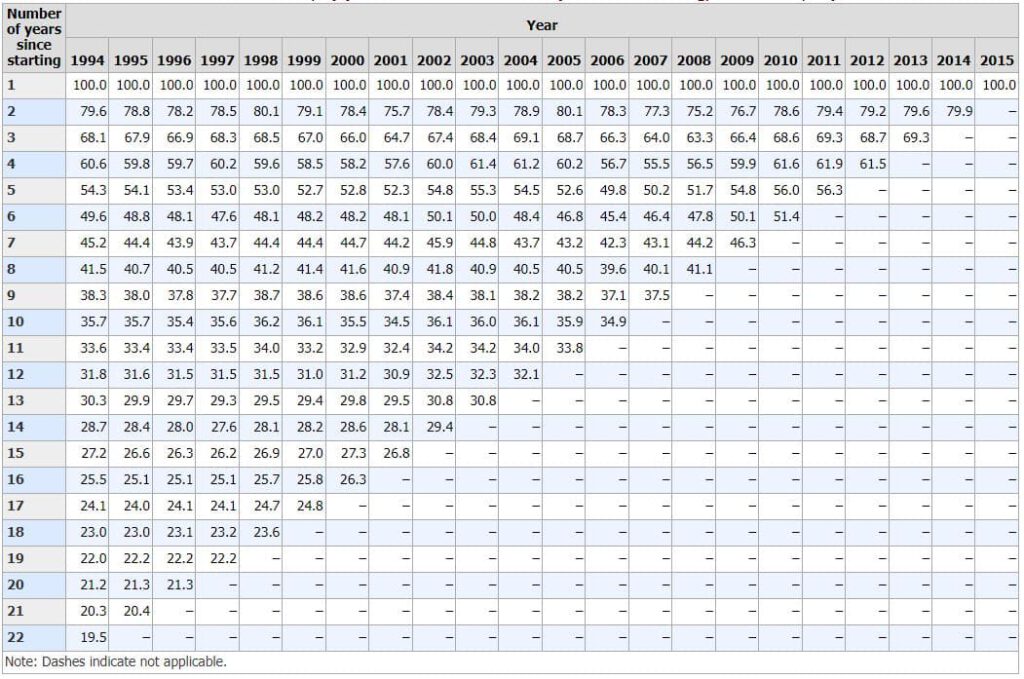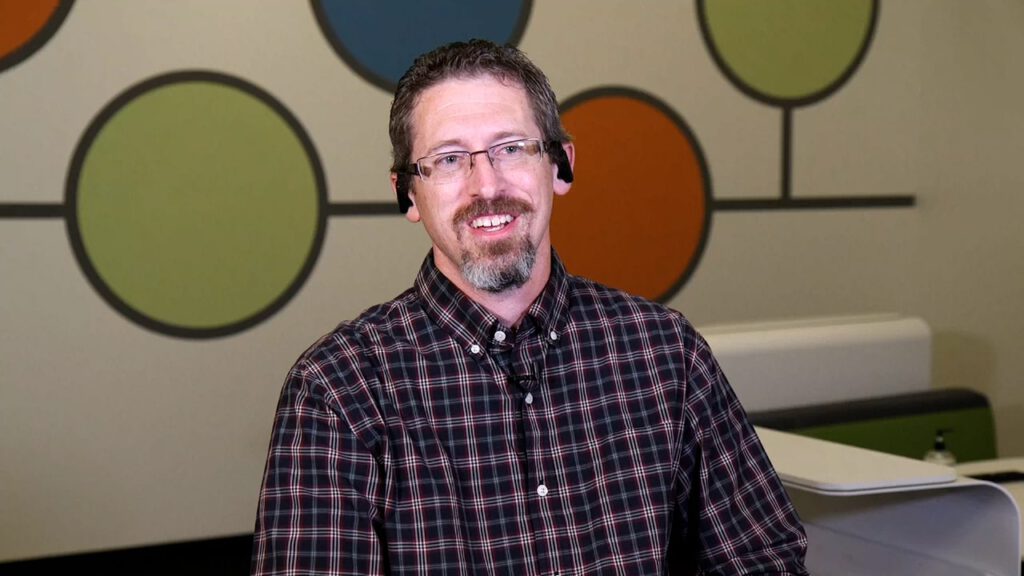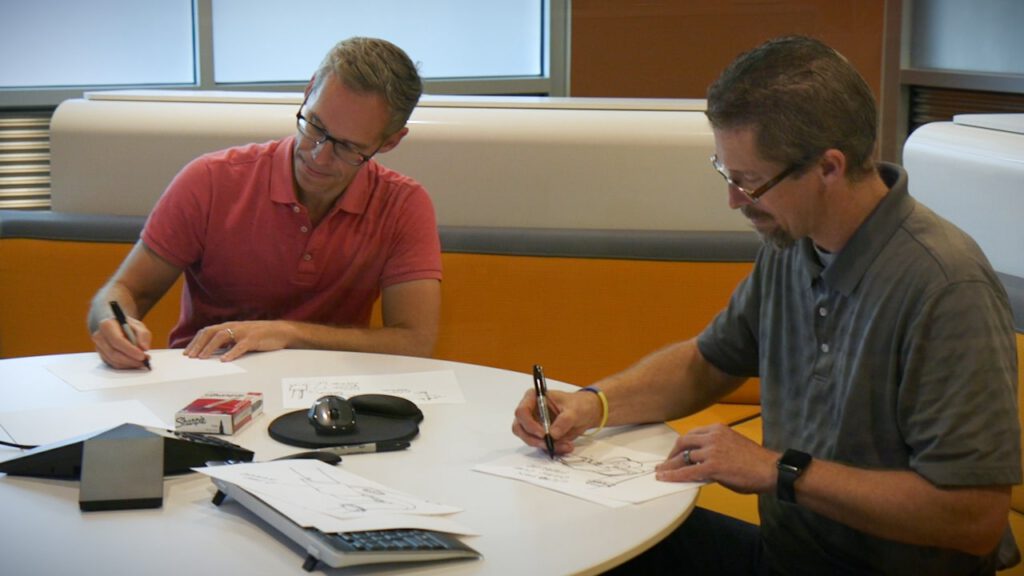Starting Catalyst From Scratch
In 1999, Dennis Turner and Jack Lawson recognized a need for fast and flexible product development services. They both took a giant leap of faith and started Catalyst Product Development Group. It wouldn’t be honest to say everything was smooth sailing from day one. There were countless unexpected hurdles that had to be overcome to create a stable and successful business from scratch. Yet here we are 22 years later, doing exactly what Jack and Dennis had envisioned from the beginning.
It’s Tough Out There
According to the most current data (2016) from the Bureau of Labor Statistics, nearly half of all new businesses fail within the first five years and only 20% of businesses make it to the 22-year mark. At Catalyst, we do a lot of product-line innovation projects for large, established companies. But some of the most rewarding product development projects we take on are for regular people who need expert guidance to realize their lifelong dream of creating a successful product. From there, they can build their own business where the sky is the limit. We think that’s pretty cool and want to empower as many entrepreneurs to succeed as we possibly can.


We Want Entrepreneurs To Succeed

Recently, we had the opportunity to team up with the Indiana Black Expo to contribute to their Minority Small Business Series. This hour-long webinar featured a wide variety of insight from the personal experiences of each panelist geared specifically toward people who want to launch a product or business. Our VP of Product Development, Andrew Mendenhall shared some of the powerful tools and techniques he uses to supercharge the beginning of our product development process. You can pop over to our channel for a deeper dive into the context of his presentation, but here are the key takeaways:
Define, Design, Test and Repeat
Q: How does design thinking impact innovation?

“So design thinking is an interesting one for me personally. I’ve had the benefit of working on a lot of different product categories, everything from juvenile products to construction equipment. I think my name’s on fifty-five patents or something of that nature. So, I enjoy helping people generate intellectual property. Almost every part or product that you interact with in your daily life has been touched by an industrial designer and mechanical engineer. It’s required for that thing to even exist. So that’s kind of fun. Design thinking is fundamental and it’s not a complicated thing. You know, you do research to fully understand the problem and you think of a lot of solutions. This is the fun stuff; this is where we get to start sketching ideas. We generate as many ideas as we can on a brainstorming level where these are quick and loose drawings, but they show a diverse solution, diverse way of solving problems. You build prototypes. You test it. You learn. You do it again and you hone in on the best solution. And I think when people are open to that, it will help improve their results on their solutions.”
Listening can be powerful
Q: What kind of resources or tools are available for entrepreneurs who are resource bound?
“There’s a lot of tools out there. And for entrepreneurs, you don’t have a movement of resources and funds. So, what’s going to be really important is talking to people. You could go online; you could read a lot of different publications on all the research tools. There’s traditional research tools, focus groups and things like that. But I think one of the really important things is being able to listen to whatever research you are doing. You’ll always have people who hear what they want to hear. At the focus groups and different research events we take our customers to, sometimes they’ll hold on to the thing they want to hear, and they won’t hear the real message. It does take some skill and some talent to do that. Maybe you need some other ears to listen, to make sure that you’re not just hearing what you want to hear. So, I would encourage people to learn how to listen with an impartial mindset. You can engage on it and that’s free.”
Keep an Open Mind
Q: When creating a product or service, how do we downplay our own biases?
“Entrepreneurs are usually driven by a specific problem that they’ve identified … that they’ve lived, right? They want to have a solution for that, and they lock in a solution. That’s great. But the tools that we talk about, within the framework of design thinking, highlighting design, iterating, testing your ideas … what’s really important is to be able to be open minded, to see that there are some other ideas. If you don’t look at some of the other ideas than you might invest a lot of money in something that wasn’t the best solution. And you don’t know until you go look for it. But also, during that component of research it’s essential that you remove yourself from the equation. So, you need the brutal, honest truth sometimes. I think that’s one of the things that makes people uncomfortable, is hearing that maybe their idea wasn’t something that people really want. But if you listen to them, you can discover how to refine that idea to make it better. People have a hard time embracing something very different. And I think sometimes, it’s important for our customers to take a leap of faith, and you may just have to go for it.”
The Process is Versatile
Q: How does the process differ when you are offering services as opposed to a physical product?
“That’s a prototyping process as well. You can prototype a physical thing or a service. At Catalyst we’ll prototype assembly processes for customers. We have incubation assembly. It’s the same idea. Let’s build the thing.

Let’s experience the process and see what’s going to work and not work when it goes to manufacture. And the faster you can do that, the faster you can learn, the better off you’ll be. Storyboarding is a tool that we’ll use to think about that process. I can make some sketches of a product concept, right? But you can storyboard that process of the service to start to see some initial hiccups before you actually employ everybody to get out there and do it. So that’s a sketching technique that’s a tool the designers engaged in design thinking might have, but it’s for the same objective.”
Build Value for Investors
Q: How do you get the capital it takes to go beyond the design process?
“There’s a lot of crowd sourcing out there that’s become popular the last few years. People are using different online tools to get some funding. Our clients need someone who can help them have a good understanding of what it’s going to cost to take the product idea or concept further. They’ll come to us to get to that level. So, they need to invest a to certain point to what they can handle and then do their homework, so they know that they’re asking investors for the right amount of money. It seems like the ones that are more successful have ingested a certain amount of funds to get to a nice prototype and marketing video.”
Set yourself up for success

So Andrew got us off to a great start, but if you are new to the product development process, there’s still a lot more to unpack. The Minority Small Business Series is a powerhouse resource, and we are proud to have made our small contribution to the cause. There’s a wealth of information for the new business owner in the full webinar on the IBE channel. Hubspot has recently published an article on funding a startup as well as a handy checklist to define your product vision. Another great resource is the Catalyst process page, which spells out a bit more on what to expect when you’re ready to take the plunge. Of course, you can always reach out to us with specific questions. We love to talk innovation and are willing to help any way we can!
